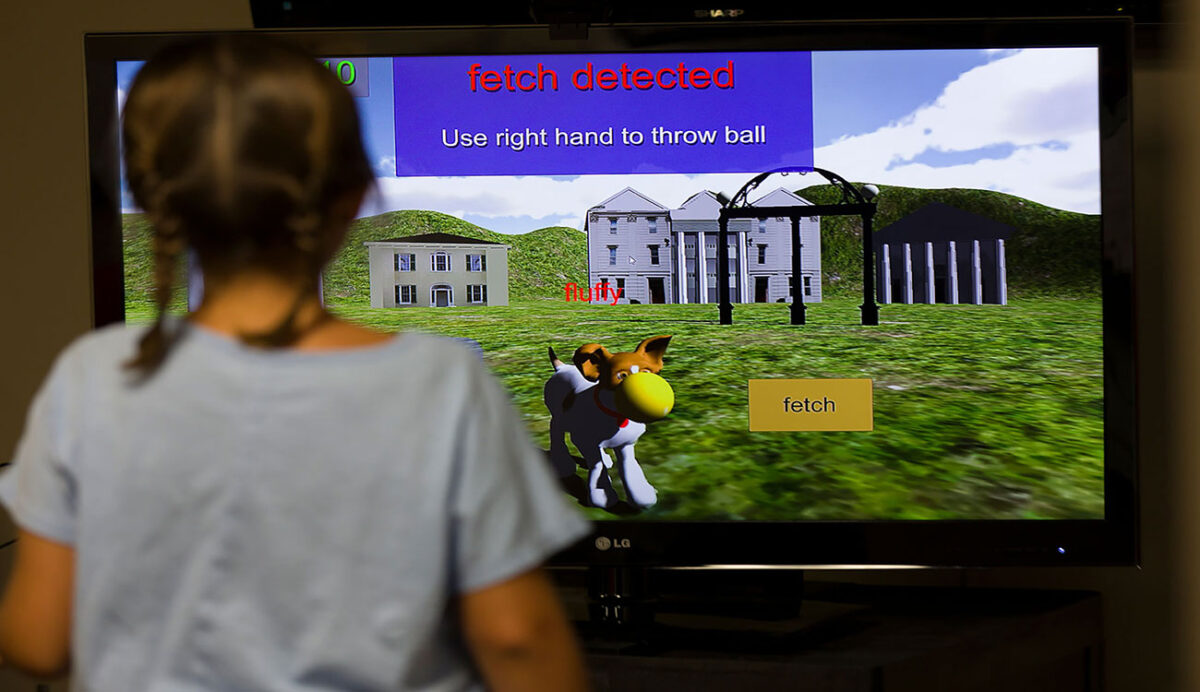Revolutionizing Children’s Health: The Virtual Fitness Buddy Ecosystem

Engaging children in regular physical activity is crucial for building lifelong healthy habits. Recognizing this, OIBR Distinguished Scholar, Sun Joo (Grace) Ahn, Professor of advertising and public relations at the University of Georgia and the director of the Center for Advanced Computer-Human Ecosystems (CACHE), and a team of researchers developed an innovative intervention known as the Virtual Fitness Buddy (VFB) ecosystem. Thanks in part to a $3.3 million grant from the National Institutes of Health, researchers are using mixed reality to help children develop a more active lifestyle. This 6-year cutting-edge program leveraged mixed reality technology to help children set and achieve physical activity goals, transforming sedentary behavior into light-intensity activity. Here’s how this exciting new approach works and why it matters.
The Need for Early Intervention
Children aged 6 to 11 are at a pivotal stage for establishing healthy behaviors that can last into adulthood. Unfortunately, many children do not get enough physical activity, which can lead to obesity and other health issues. Intervening during this critical window can significantly improve long-term health outcomes.
What is the Virtual Fitness Buddy Ecosystem?
The VFB ecosystem is a precision health physical activity intervention that combines technology with personalized support. At its core is a virtual dog that interacts with children through a mixed-reality kiosk. This virtual companion helps children set physical activity goals, provides real-time feedback, and encourages progress through encouragement and playtime with the children. The system also involves parents, who receive updates and can send motivational messages to their children.
How It Works
1. Setting Goals: Children in the intervention group use the mixed reality kiosk to set their physical activity goals with the help of their virtual dog. This process is designed to foster a sense of autonomy, as children are encouraged to set their own goals.
2. Tracking Progress: The virtual dog monitors children’s physical activity through wearable devices like Fitbits. It adjusts its behavior based on the child’s activity levels, becoming more energetic and responsive as the child meets their goals.
3. Parental Involvement: Parents receive notifications about their child’s progress and can send encouraging messages via the kiosk. Along with the virtual dog’s social support, parental involvement helps to build an additional layer of supportive environment that promotes sustained physical activity.
The Study
The efficacy of the VFB ecosystem was tested in a cluster randomized controlled trial involving 303 children from 19 afterschool sites over two six-month cohorts. The study compared children using the VFB system to a control group who set and met physical activity goals using a computer without the virtual dog’s support.
Results
The study found that the VFB ecosystem significantly increased physical activity and reduced sedentary behavior in children, particularly those with low baseline levels of moderate-to-vigorous physical activity. Children in the treatment group showed a substantial conversion of sedentary time to light-intensity physical activity. These effects were most pronounced at the three-month mark, although some benefits were sustained at six months.
Why It Matters
The VFB ecosystem represents a promising new approach to promoting physical activity in children. Combining technology with personalized support and parental involvement, it addresses the motivational needs identified by self-determination theory. This theory emphasizes the importance of autonomy, competence, and relatedness in fostering intrinsic motivation for behavior change.
Conclusion
The Virtual Fitness Buddy ecosystem shows great potential for helping children build healthier lifestyles through engaging and supportive technology. By turning physical activity into a fun and interactive experience, this intervention can make a significant impact on public health. With further development and wider implementation, the VFB ecosystem could play a crucial role in combating childhood obesity and promoting long-term health.
Source: Nature
Written by: Andrea Horsman
July 23, 2024
